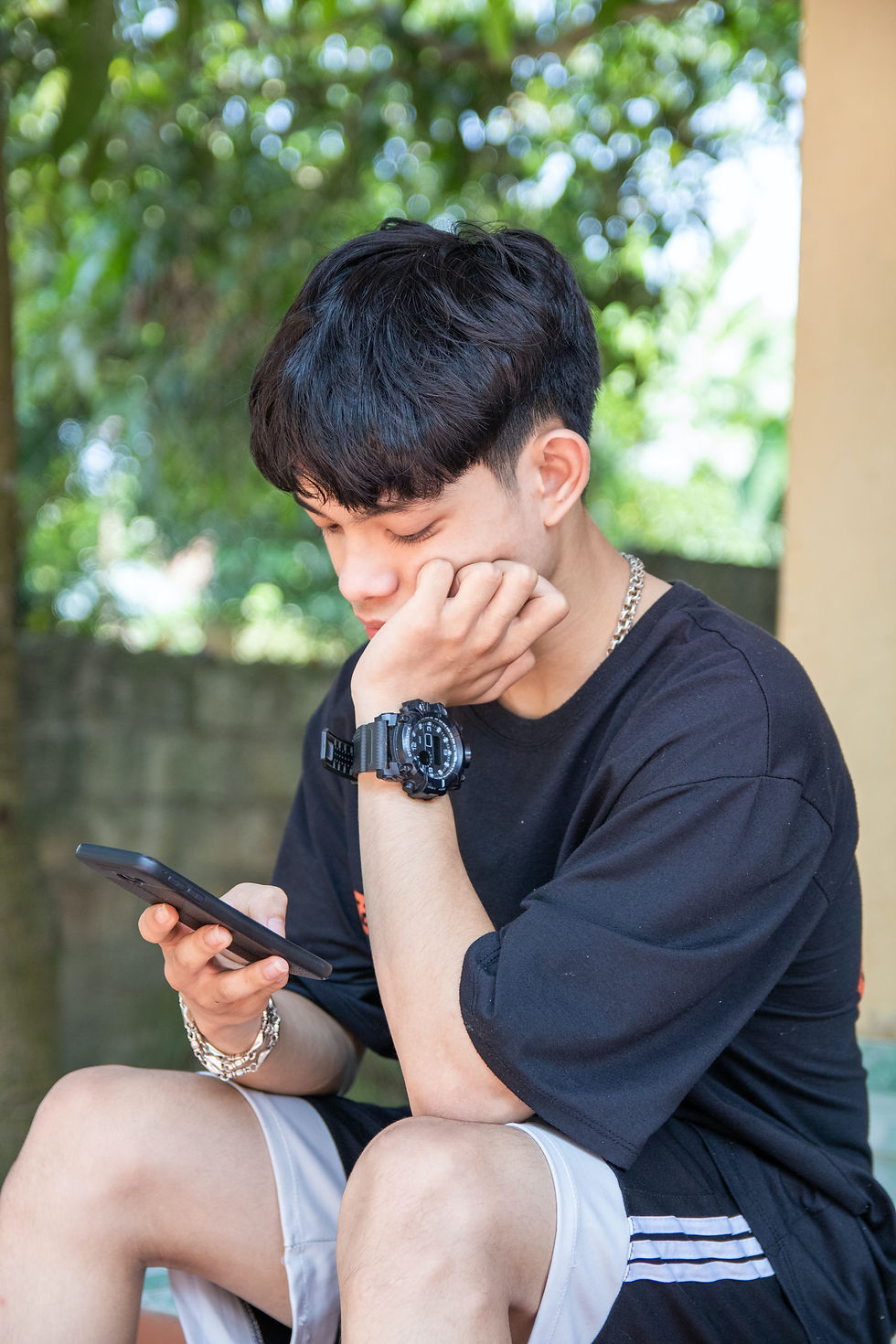Will my child vision gets worse by using a phone?
- Blog Contributor

- Nov 29, 2022
- 2 min read
Parents are getting more concerned about potential vision "damage" from digital devices use.
Every day in the office parents complain that schools are moving to an all digital format. Lectures are on a screen, homework in now mostly done on laptops. Then, when school is over, many children will play games on tablets or phones.
A reasonable question from many parents is: "How many hours a day can my kid play on his phone" ?
Let's tackle the elephant in the room first. Digital devices such as tablets or phones do not create tissue damage. They do no harm to the retina, they do not create cataracts, because the amount of blue light from screens is infinitely small compared to let's say sunlight.
With that said, blue light does have some negative effects: studies have shown that exposure to blue light can interfere with circadian rhythms (and therefore delay sleep). It is a good idea to limit (anyone) screen use after sunset.
Screens and blue light can create visual fatigue because of artificial lights and because of the proximity of the screen. (kids are notorious from using their device inches away from their face)
Some of those negative effects can be countered by using blue-light filters and by not using a device to close to one's face. Parents should aim for their kids to use a phone or tablet at forearm length at a minimum.

Adopting basic visual hygiene, good posture, will limit eye fatigue, and limit the risk of myopia or myopia progression.
Myopia is the technical word for being nearsighted. Some who is nearsighted cannot see clearly from far without glasses but the near vision is usually good. We correct myopia using "negative" lenses with prescriptions ranging from something minor like -0.50 all the way to -20 for someone with high or severe myopia.
The problem with myopia is not the need for glasses. The issue is that myopia has a strong association with eye diseases that can have serious consequences, such as glaucoma or a retinal detachment.
That is why is recent years eye care professionals have regained an interest in myopia control, because we finally have solutions proven to work. The goal is to avoid myopia altogether or keep it under control with the least amount possible or the least myopia progression possible.

Currently there are a few methods that have been studied rigorously and proven to limit myopia progression:
-Atropine eye drops are used at very low concentration, usually once a day until the vision in deemed stable. We typically use 0.01% or 0.02% concentrations.
-Soft contact lenses specially designed for myopia control.
-Ortho-Keratology lenses, which are hard lenses used at night to change the shape of the cornea.
-Finally, some conventional glasses can be used with new ophthalmic lenses coming to the market FDA approved to help with myopia progression.
In summary, it is unreasonable to think parents today can prevent kids from using digital devices. A better approach is to allow screen use with daily limits, good posture. If a child becomes nearsighted and if the progression is faster than normal, strategies should be implemented to prevent potential serious complications later in life.




Commentaires